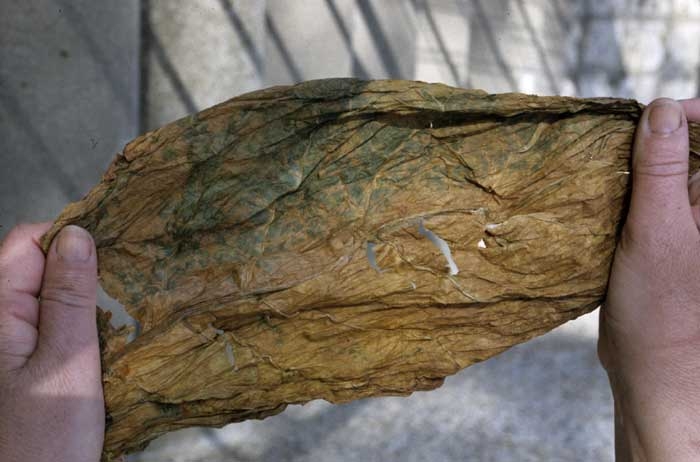
Non-parasitic diseases of air-cured leaves
The main non-parasitic lesions observed during air-curing (air-cured tobacco) of dark tobacco can be linked to different causes occuring during various development stages and transformation of the leaf.
- During cultivation :
- excess of nitrogen may cause thin leaf tissues of dark green to black in colour;
- on the other hand, lack of nitrogen will cause small, yellowish to light brown, parchment like leaves. This kind of symptom may also be a consequence of various climatic hazards or soil-borne diseases.
- At harvest :
- the green spots coalesce some times and this is called "green spot" or "Bassara disease" (figures 1 and 2). It often results from nutritional and water stress occurred during cultivation. It may be more or less harmful depending on the varieties;
- leaf tissues remain greenish, which is caused by the harvest of immature leaves.
- During curing :
- Yellowing
When leaf tissues remain greenish or appear "colourful" it may be related to a too short yellowing phase or to too low relative humidity, or to too cold temperature ;
- Browning (colour fixing)
Translucent at first, leaf tissues become purplish when dried and lose their elasticity. This phenomenon is called barn scald, it may result from excessive humidity ;
- Stem drying
Decaying of the "ribs" and surrounding tissues is called ‘run back’. It is linked to a drop in temperatures during curing.





